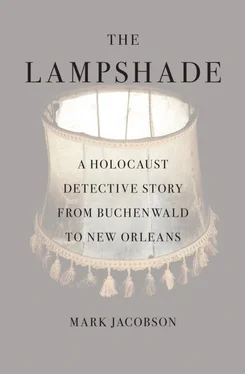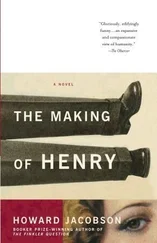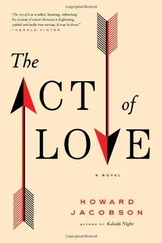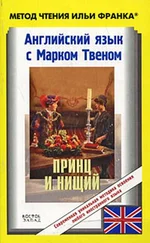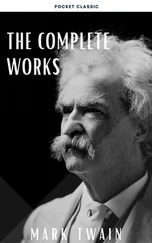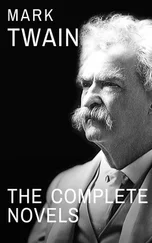On January 27, 2003, Jorge Semprún addressed the German Bundestag as the keynote speaker of a Day of Remembrance for the Victims of National Socialism, and once again called up his memories of Albert G. Rosenberg. Retired from his post as the Spanish minister of culture, Semprún recalled his days at Buchenwald, saying that even if it was his “good fortune to meet many individuals of exceptional humanity, intellectual acumen, possessed both of anger and moral courage,” it was Rosenberg that he remembered most. He spoke of their talks about philosophy, their drive across “the landscape of Goethe, on the Ettersberg,” and recollected the quiet authority Rosenberg displayed while speaking to the Germans from Weimar, telling them not to say they were innocent when they were not. Semprún explained he’d changed Rosenberg’s name to Rosenfeld in his book Literature or Life because he did not know if the American was dead or alive, and to avoid the possibility that Rosenberg would feel “disturbed or injured” by his depiction. Mentioning that Rosenberg himself had lost twenty-eight family members in the Holocaust, Semprún said he knew the story of the American soldier was far from over. Perhaps someday, the then seventy-nine-year-old Semprún said, he would write about Albert Rosenberg again. When I saw Rosenberg in El Paso in 2008, five years after Semprún’s Bundestag speech, I asked him if he’d ever heard from the writer. No, Rosenberg said. But that was fine.
New Orleans’s ethnic riots did not all involve members of the black community. The anti-Italian riots of 1891, during which eleven immigrants were murdered, rank as the largest mass lynching in American history. The incident was set off by the assassination of New Orleans police chief David Hennessy, who had arrested a number of reputed Mafia racketeers. Hennessy’s reported dying words, allegedly whispered to an NOPD captain, “Dagoes did it,” set off a chain of events that culminated in a mob storming the Orleans Parish Prison and dragging out all Italian prisoners. The lynchings were defended by New Orleans mayor Joseph Shakespeare, who said, “The Italians had taken the law into their own hands and we had no choice but to do the same.”
On February 11, 2009, 117 years after Homer Plessy’s arrest at the corner of Press and Royal Street, 113 years after the watershed Plessy v. Ferguson Supreme Court case, the City of New Orleans finally got around to putting up a plaque on the site. A heartwarming story it was, too, at least as depicted in the Times-Picayune, which told of how Keith Plessy, a fifty-two-year-old New Orleans bellhop and great-grandson of Homer Plessy’s first cousin, collaborated with Phoebe Ferguson, great-great-granddaughter of John Howard Ferguson, the judge who ruled to uphold the city’s “separate car” laws, to make sure the city finally commemorated the historic spot. Some people, Skip Henderson among them, were less than impressed. Skip had been trying to get the vacant lot where the railway station once stood turned into a “Civil Rights Park” for years with no success. “Looks kind of like a historical marker you drive by on the interstate,” Skip said of the two-foot-square brown and yellow plaque. But still, it was better than nothing.
For a discussion of anti-Semitism in the German Democratic Republic and issues of right-wing activity in the current Germany, see the work of the Amadeu Antonio Foundation, http://www.amadeu-antonio-stiftung.de/start.
Long before her surrogates lit up the screens of American grind houses, the sexual legacy of Ilse Koch was a sub-rosa sensation in Israel. For a whole generation of horny Israeli teenage boys, vivid comic books depicting female SS officers abusing camp prisoners were just about the only pornography available. The books, called “stalags,” followed similar plotlines to the Ilse film: sadistic, busty camp guards decked out in full bondage gear tortured prisoners until the underlings rose up to kill the vicious women, usually raping them along the way. Since Ilse Koch was the worldwide model for the evil Nazi sexual predator, it would be fair to say her image was at least the initial inspiration for these cheesy but undeniably compelling books. The fact that the Holocaust was rarely discussed in Israel prior to the Eichmann trial no doubt added to the subconscious appeal of the works. A film documenting the phenomena, Stalags: Holocaust and Pornography in Israel, played at the 2007 Jerusalem Film Festival, engendering much controversy.
In the middle 1990s, Professor Karl Skorecki and his collaborators established the existence of the “Cohen Modal Haplotype,” a DNA configuration thought to be distinctive to descendants of Aaron, brother of Moses, the first Kohen Gadol (high priest) of the twelve tribes of Israel. Since then many Jews, in both America and Israel, have undergone DNA testing to see if their particular arrangement of Y chromosomes qualifies them as Kohanim, or members of the priestly class. “Not everyone is Kohanim, but lots of people wish they were,” said Rabbi Yaakov Kleiman when I talked to him in a café not far from his house in the Old City of Jerusalem. Author of a number of books on the topic, including DNA and Tradition: The Genetic Link to the Ancient Hebrews, Rabbi Kleiman, a Kohen himself (and a big Dr. John the Night Tripper fan), sees the discovery of the priestly gene as a powerful linkage between modern Jews and those of biblical times. “Jews have spent so much time and effort debating who is a Jew and who isn’t. Now science is helping us, making some of the decisions for us. We’re living in the golden age of Jewish population genetics,” Rabbi Kleiman said. “I think that fifty years ago, if you had asked a Jew, especially a Jew in Israel, if it was possible to trace their origin straight back to Aaron, they would have looked at you like you were nuts. Now we can. Perhaps that explains a lot of recent history, because when suddenly things you think will always be hidden are suddenly revealed, that changes a lot.”
Probably the best source for information about the New Orleans Jewish community is Catherine Kahn, coauthor of The Jewish Community of New Orleans, former president of the Southern Jewish Historical Society, and longtime archivist at Touro Infirmary. An exceedingly charming lady who has been known to greet a visitor with a hardy “Shalom, y’all,” Cathy Kahn is Albert Rosenberg’s cousin. When I was in El Paso visiting Rosenberg, he said, “Well, if you want to know anything about Jews in New Orleans, call my cousin Cathy. She has it all down.” Offering to make an introduction, Rosenberg dialed his cousin’s number. She wasn’t home, so he left a message. “Hello, Cathy, this is Albert, calling from El Paso… Look, I’m talking to this nice young man who is doing some research on a parcel found in your neck of the woods. It is a lampshade made of human skin. Help him if you can, would you please? Ciao .” Hanging up, Rosenberg, a sardonic glint in his eye, said, “That ought to get her attention.” The next time I was in New Orleans, I looked up Cathy and we had a nice chat. She asked me what I was writing about; I told her about the lampshade. “Oh, so that’s what Albert was talking about,” Cathy exclaimed. “I knew it was something strange.”
Shortly before dropping the lampshade off at Buchenwald, I stopped in to visit Gert Schramm at his home in Eberswalde, thirty miles northeast of Berlin. Now in his early eighties, Schramm, son of a German woman and an African American, was the only black prisoner at Buchenwald. His father, Jack Brankson, an engineer from San Francisco, met his mother in Erfurt, where they fell in love and were married. When the Nazis came to power, Brankson was arrested and sent to Auschwitz, where presumably he was murdered. Young Gert was incarcerated in the children’s barracks at Buchenwald. He managed to survive, was embraced by the East German regime, and made a good living running a cab company. Schramm was present in the camp on April 16, 1945, when the Buchenwald Table was shown to the people from Weimar. “Yes. I remember it well,” Schramm said, pointing out that the white background seen in the Buchenwald Table photo was probably a sheet held up by prisoners so the photographer could get a better shot. He recalled the shrunken heads most vividly and “had no doubt whatsoever” that the Nazis skinned prisoners at the camp and made them into lampshades. In regard to the Liberators controversy, Schramm, who had an Obama sticker on his car, said he did see a number of black soldiers at the camp in the first days after liberation. “This was incredible to me. Outside of my father, who had already been missing for so long, I’d never seen a black person until the Americans came. I knew these people looked like me but I never thought of myself as black. I was a German and this was how I looked. This is what I saw in the mirror, myself, that was all. So I was amazed to see the black soldiers, but they were not all black. The story that blacks liberated the camp is not true.” Schramm said being black in Germany has not been a problem for him. “I often think that this was a very good thing, because from what I have read and what people have told me, my life would have been much harder in America.” Retired now, Schramm is writing his life story and makes a point of giving speeches to schoolchildren warning about the rising neo-Nazi movement. He still sits on the prisoners’ advisory board at Buchenwald but as a son of the GDR retains reservations about the “Wessie,” or western, influence at the former camp.
Читать дальше
